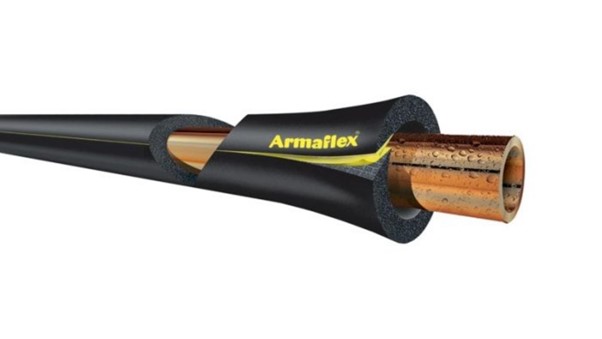Insulation is often viewed merely as a barrier to temperature fluctuations. However, addressing internal piping and choosing appropriate insulation materials in an energy-efficient building is pivotal. The assumption that one insulation fits all applications is incorrect. The requirements to Insulate Water Pipes systems differ significantly, and wrong choices can result in inefficiencies and system breakdowns.
Cold vs. Hot: A Brief Comparison
- Cold Systems: Insulating water pipelines in exposed sections, particularly in colder regions, is paramount. Any water pipes exposed to external walls or spaces without heating can freeze, leading to burst pipes and potential flooding. Furthermore, insulating these pipes avoids moisture condensation, which can lead to "sweating". The importance of moisture management for thermal efficiency can't be stressed enough; excessive condensation can cause energy losses, escalating operational costs, and degraded indoor air quality due to mould growth.
- Hot Systems: Insulating hot water pipelines results in tangible savings on energy by preventing heat dispersion. Not only can it maintain water temperatures 1°C–3°C higher than uninsulated pipes, but it also allows the water heater settings to be reduced. Another perk? Occupants won't have to wait long for their showers to heat up, conserving water in the process.
Pinpointing the Ideal Insulation Locations
- To prevent freezing and condensation, focus on the pipes that go through non-heated zones, such as external walls, attics, basements, or unheated storage areas.
- To reduce water heating expenses, insulate hot water pipes wherever feasible. Cold water pipes warrant most insulation if the objective is to combat pipe condensation and the resulting mould.
Top Tips for Professional Insulation Installation
Insulation installation might appear straightforward, but an organised approach can ensure the best outcomes. When you're striving for the pinnacle of efficiency, every detail matters. Below are some top tips for those looking to get the most out of their insulation efforts:
Assessment First
Before rushing in, take a moment to assess the area. Understand the type of pipes you're working with, their location, and the specific environmental challenges they face. Is the area damp? Is it particularly cold or hot?
Choose the Right Material
While tubular foam is excellent for long stretches, wraps might be better for shorter lengths or tricky spots. The material should suit the temperature challenges and specific conditions to which the pipes are exposed.
Mind the Gaps
Always ensure there are no gaps in the insulation. Even the smallest gap can lead to condensation or heat loss, undermining the insulation's efficiency.
Layer Up
If you're using wraps or tapes, it's essential to overlap layers generously. This ensures the continuity of the insulation barrier and enhances its effectiveness.
Secure the Insulation
Once the insulation is in place, ensure it's secured properly. Whether using clamps, adhesives, or ties, a snug fit ensures longevity and sustained performance.
Keep Moisture Out
Consider using a vapour barrier for cold water pipes, especially in humid conditions. This keeps moisture out and prevents the "sweating" phenomenon.
Regular Checks
Insulation, like all building materials, can degrade over time. Schedule regular inspections to spot any wear and tear or areas where the insulation might have become compromised.
Safety First
When working in tight spaces, always ensure good ventilation. Some insulation materials can release fumes that are harmful in enclosed spaces. Always wear protective gloves, especially when working with fibreglass or mineral wool insulation.
Go Green
If you're environmentally conscious, consider eco-friendly insulation options. Numerous sustainable materials don't compromise on efficiency.
Seek Expertise
If you're unsure about the best insulation for your project, consider consulting a professional. Their expertise can guide you to the best choices for your specific needs.
Choosing the Best Insulation
Products like Armaflex Tubolit Polyethylene pipe insulation foam or Armaflex Black Nitrile Pipe Insulation Lagging Foam are top-notch for household plumbing tasks. They are cost-effective and straightforward to install and the PE foam insulation keeps hot pipes heated and cold pipes chilled.
In Conclusion
Insulation isn't merely about maintaining temperature. It plays a pivotal role in energy conservation, operational cost savings, and even preventing structural damage due to freezing or mould growth. When considering insulation, always remember that one size doesn't fit all. Tailor your choice based on the specific needs of your building's piping system, and always use the best quality pipe lagging you can afford.






